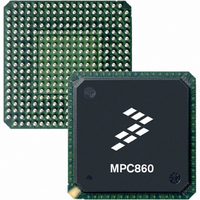MPC8241LZQ200D Freescale Semiconductor, MPC8241LZQ200D Datasheet - Page 45

MPC8241LZQ200D
Manufacturer Part Number
MPC8241LZQ200D
Description
IC MPU 32BIT 200MHZ PPC 357-PBGA
Manufacturer
Freescale Semiconductor
Datasheet
1.MPC8241LZQ200D.pdf
(58 pages)
Specifications of MPC8241LZQ200D
Processor Type
MPC82xx PowerQUICC II 32-bit
Speed
200MHz
Voltage
1.8V
Mounting Type
Surface Mount
Package / Case
357-PBGA
Family Name
MPC82XX
Device Core
PowerQUICC II
Device Core Size
32b
Frequency (max)
200MHz
Instruction Set Architecture
RISC
Supply Voltage 1 (typ)
1.8V
Operating Supply Voltage (max)
1.9V
Operating Supply Voltage (min)
1.7V
Operating Temp Range
0C to 105C
Operating Temperature Classification
Commercial
Mounting
Surface Mount
Pin Count
357
Package Type
BGA
Lead Free Status / RoHS Status
Contains lead / RoHS non-compliant
Features
-
Lead Free Status / Rohs Status
Not Compliant
Available stocks
Company
Part Number
Manufacturer
Quantity
Price
Company:
Part Number:
MPC8241LZQ200D
Manufacturer:
FREESCALE
Quantity:
513
Company:
Part Number:
MPC8241LZQ200D
Manufacturer:
Freescale Semiconductor
Quantity:
10 000
Part Number:
MPC8241LZQ200D
Manufacturer:
FREESCALE
Quantity:
20 000
System Design Information
7.6
JTAG Configuration Signals
Boundary scan testing is enabled through the JTAG interface signals. The TRST signal is optional in the
IEEE 1149.1 specification, but is provided on all processors that implement the PowerPC architecture.
While the TAP controller can be forced to the reset state using only the TCK and TMS signals, more
reliable power-on reset performance will be obtained if the TRST signal is asserted during power-on reset.
Because the JTAG interface is also used for accessing the common on-chip processor (COP) function,
simply tying TRST to HRESET is not practical.
The COP function of these processors allows a remote computer system (typically, a PC with dedicated
hardware and debugging software) to access and control the internal operations of the processor. The COP
interface connects primarily through the JTAG port, with additional status monitoring signals. The COP
port must independently assert HRESET or TRST to control the processor. If the target system has
independent reset sources, such as voltage monitors, watchdog timers, power supply failures, or
push-button switches, the COP reset signals must be merged into these signals with logic.
The arrangement shown in
Figure 27
allows the COP port to independently assert HRESET or TRST,
while ensuring that the target can drive HRESET as well. If the JTAG interface and COP header will not
be used, TRST should be tied to HRESET through a 0-Ω isolation resistor so that it is asserted when the
system reset signal (HRESET) is asserted, ensuring that the JTAG scan chain is initialized during
power-on. Although Freescale recommends that the COP header be designed into the system as shown in
Figure
27, if this is not possible, the isolation resistor will allow future access to TRST in the case where
a JTAG interface may need to be wired onto the system in debug situations.
The COP interface has a standard header for connection to the target system, based on the 0.025"
square-post, 0.100" centered header assembly (often called a Berg header). Typically, pin 14 is removed
as a connector key.
There is no standardized way to number the COP header shown in
Figure
27. Consequently, different
emulator vendors number the pins differently. Some pins are numbered top-to-bottom and left-to-right
while others use left-to-right then top-to-bottom and still others number the pins counter clockwise from
pin 1 (as with an IC). Regardless of the numbering, the signal placement recommended in
Figure 27
is
common to all known emulators.
MPC8241 Integrated Processor Hardware Specifications, Rev. 10
Freescale Semiconductor
45











